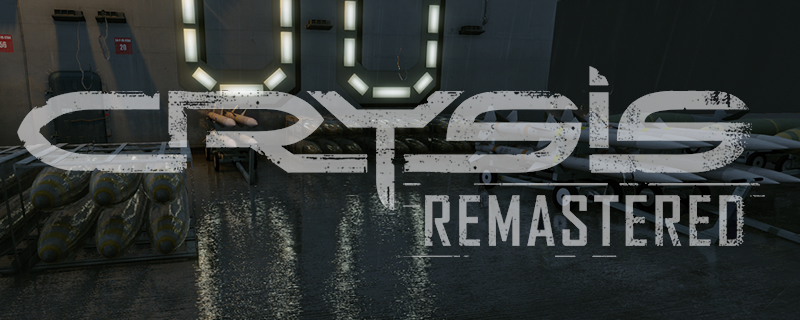Crysis Remastered PC Performance Review and Optimisation Guide
Conclusion
Crysis Remastered is a mixed bag on PC, so much so that we find the game difficult to recommend. While the game runs great at Medium settings, higher graphical presets complicate matters, placing both CPU and GPU resources under tremendous strain.Â
We love the additions to Crysis Remastered, like SVOGI (Sparse Voxel Octree Global Illumination), ray traced reflections, screen-space reflections, high-resolution textures and the game’s higher graphical settings. All of these additions add to Crysis’ graphical splendour. That said, the game’s lack of many of Crysis’ original features is disappointing. Player saves are missing, the Ascension level is missing, and some of the graphical aspects of Crysis’ magical 2007 version are missing. With this in mind, hardcore fans of the original may be disappointed with this remaster. Â
While Crysis Remastered looks much better than the original as a whole, there are areas of Crysis’s 2007 version which look better than this 2020 re-release. While a lot of this stems from the fact that Crytek and Saber Interactive based this remaster on Crysis’ console version, it is disappointing that that PC version of Crysis Remastered does not surpass the original in all areas.Â
Performance-wise, there is a lot of love about Crysis Remastered. At medium settings, draw distances are similar to the original at its highest settings and can deliver significantly higher performance levels on modern systems. As a whole, Crysis Remastered is a lot more hardware efficient than Crysis’ 2007 iteration, but things change drastically if gamers target the remaster’s higher presets.Â
Like the original, CPU performance is a limiting factor for Crysis Remastered, as the game’s high, and higher, vegetation settings can cause severe CPU performance limits. Ray tracing also adds a lot of CPU overhead and introduces stuttering into the experience. Sadly, Crysis Remastered can’t effectively use more than four CPU cores, preventing modern systems from powering through these performance challenges. In this respect, we cannot help but feel that Crysis Remastered is letting modern systems down on the software side.Â
In a recent blog post, the team behind Crysis Remastered stated that “draw calls are very high” when using the game’s high vegetation settings. With this in mind, we cannot help but think that more development time or the use of a more modern API like Vulkan or DirectX 12 could have addressed this issue. Many fans of Crysis expected this remaster to be a lot more multi-threaded, but sadly this isn’t the case. Â
Credit where credit is due, Crytek has managed to squeeze more out of the DirectX 11 API than anyone, bringing a high-quality implementation of ray tracing to systems which frankly shouldn’t support the feature. The fact that ray tracing is possible on Xbox One X and PlayStation 4 Pro are massive achievements, and enabling this feature on older PC hardware is equally impressive. Sadly, Crysis Remastered’s ray tracing is limited by the feature’s demands on CPU hardware, causing stuttering and other performance issues. While ray tracing can have a significant impact on Crysis Remastered’s visuals, we cannot recommend that PC gamers enable the setting due to its ability to make the game’s framerates unstable.Â
With hardware-accelerated ray tracing coming to Crysis Remastered though the additions of Vulkan ray tracing extensions to DirectX 11, we are somewhat baffled by Crysis Remastered’s use of the legacy API. Surely a pure Vulkan version fo Crysis Remastered could be used to help address the game’s CPU-limited performance and the high draw calls of high vegetation settings, or implement ray tracing acceleration in a more simplistic manner?Â
To get the best performance from Crysis Remastered, disabling ray tracing will be the first port of call for most gamers, even those with RTX series graphics cards. Even then, CPU-limited performance will be a huge factor for those who are not using high-end processors, as Crysis Remastered demands a lot of single-threaded performance. As detailed on page, 6, lower vegetation settings will help address this issue. Â
On the GPU-side, ray tracing, postprocessing quality, shadow quality, and shader quality are the main settings that PC gamer should consider lowering. SMAA 2TX is by far the best anti-aliasing solution when it comes to removing jaggies and doesn’t lower framerates much over the game’s other anti-aliasing settings.Â
Â
If you want a new game to crush your PC hardware, Crysis Remastered is it. No CPU or GPU today can run this game at 4K 60 FPS at maxed-out “Can it Run Crysis” settings. In that regard, Crysis Remastered lives up to the legacy of the franchise.Â
In the future, we know that a DLSS update is coming to Crysis Remastered, and with it, we would love to see changes to the game that would help alleviate the game’s CPU-related performance issues. As it stands, Crysis Remastered seems software-limited on the CPU-side, not hardware-limited, and we would love to see that situation rectified. Beyond that, we would love to see the CPU stuttering reduced when ray tracing is enabled. That change would make Crytek’s extraordinary software ray tracing to be a lot more usable by PC gamers, addressing one of our main performance issues with the game. Â
As it stands, we have a love-hate relationship with Crysis Remastered. We love many of the game’s new graphical features, and the game’s hardware efficiency at its lower presets, but the game’s cutbacks and the CPU-limited nature of the game’s higher settings, sour what is otherwise an excellent game.Â
For many PC gamers, Crysis Remastered will need to be played with tempered expectations. Crysis was and is an excellent game, and that holds with this remaster. If future patches address any of the issues that we have discussed here, we will report on it and revisit this analysis.Â
You can join the discussion on Crysis Remastered’s PC performance on the OC3D Forums.Â



